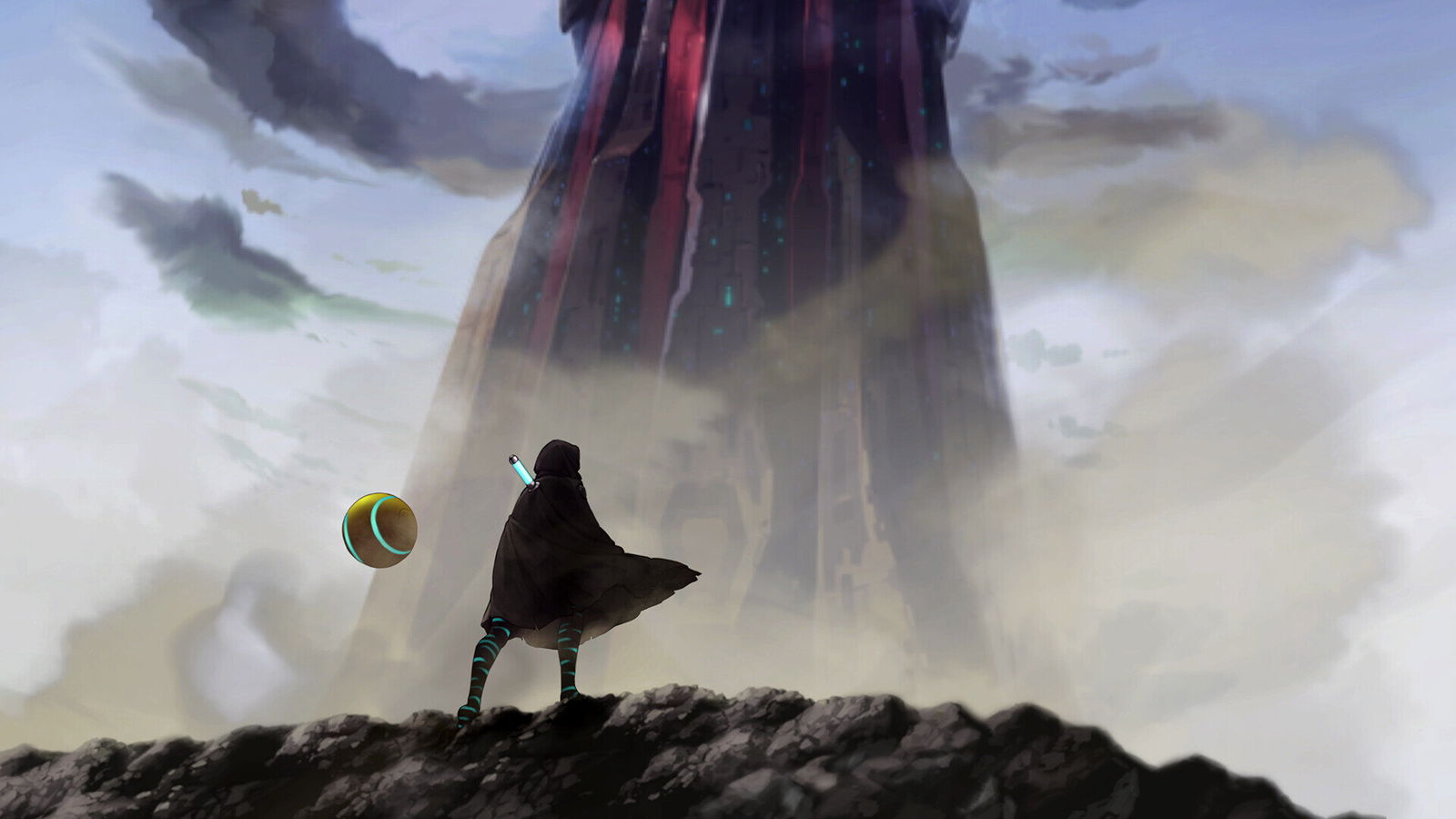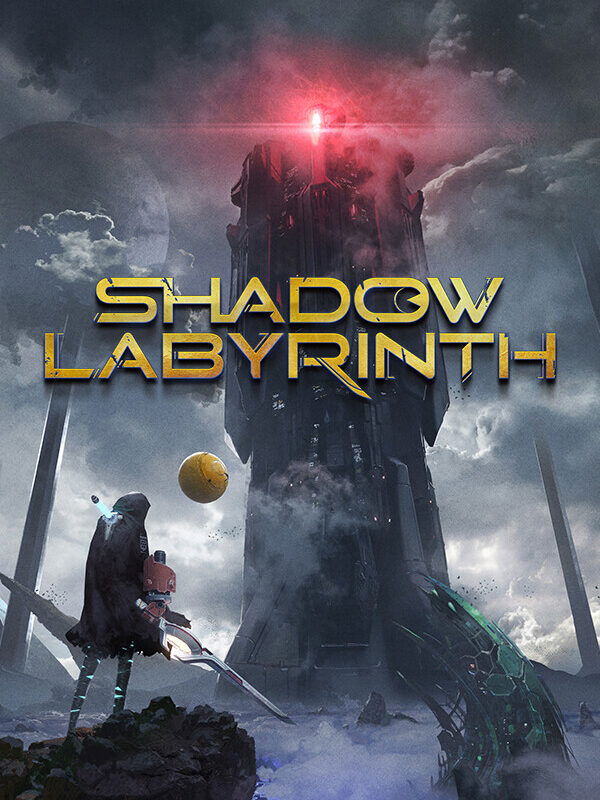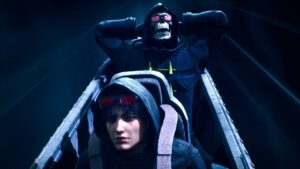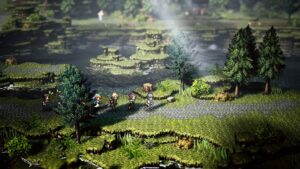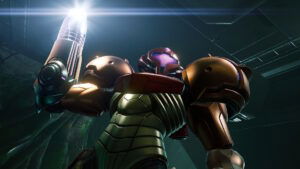As strange as it is, I was really on board for Shadow Labyrinth. I try to maintain a why not policy when it comes to games, so when someone asks, “Why would Bandai Namco make an ultra-dark Metroid-like out of PAC-MAN?” My response is, “Why not?” It may not be something anyone asked for, but it’s fun that it exists anyway.
I supported Shadow Labyrinth in principle; however, the more I played it, the more that support waned. I really wanted to believe in this game, but for the few good ideas it has, it wastes them on a frustrating experience that doesn’t really understand what Metroid is, and doesn’t seem to know what it wants to be.
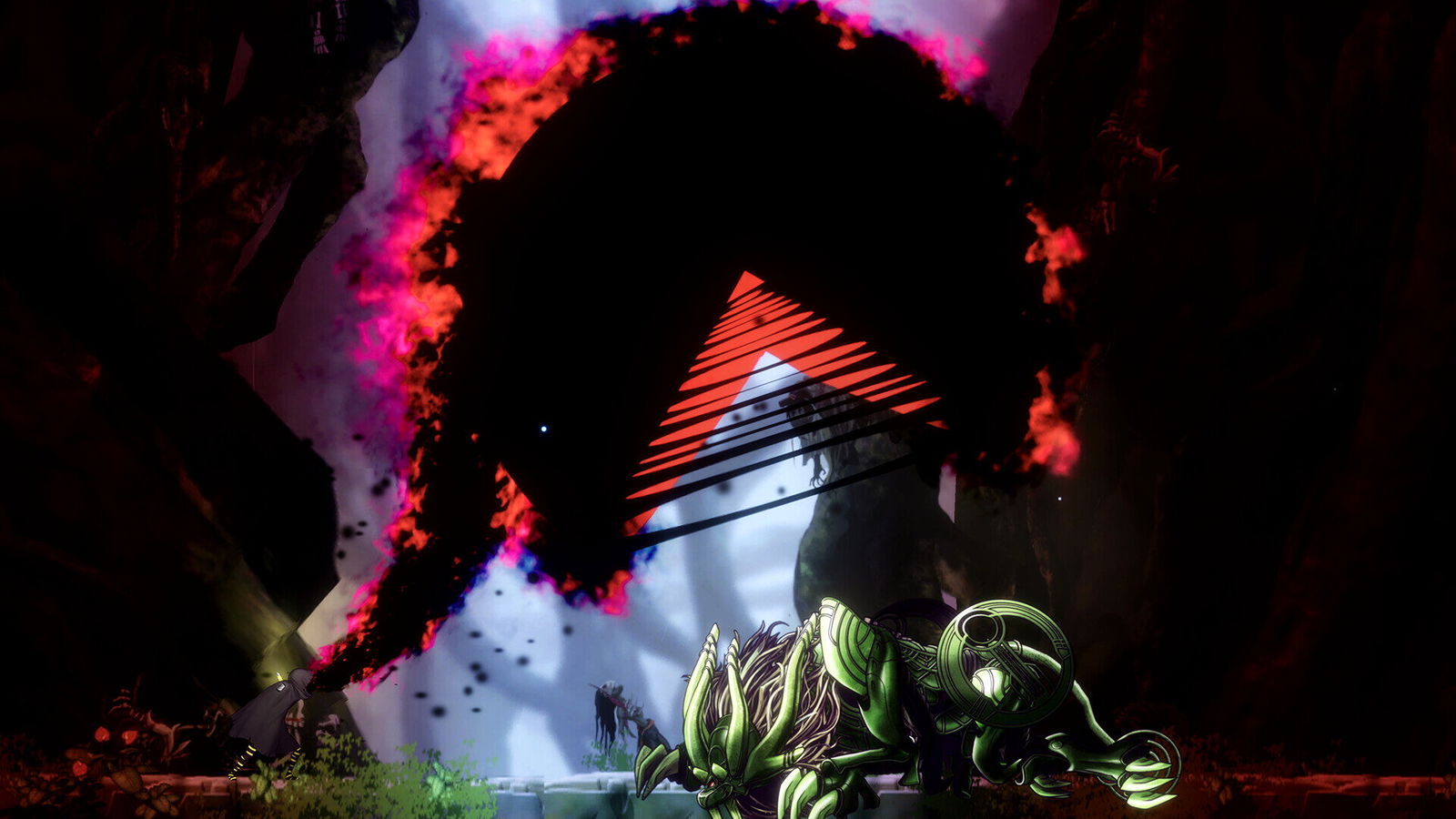
I can’t say much on the story for risk of spoilers, but if you’ve seen any of the pre-release trailers—or the Secret Level episode devoted to it—then you’ve got the gist of Shadow Labyrinth. A nameless hooded figure wakes up in a pod and is greeted by a sentient yellow orb calling itself PUCK. Able to wield a weapon called the ESP Sword, PUCK asks “The Swordsman” to help it fight through the planet’s dangerous creatures in order to reach a mysterious tower and reclaim something lost inside.
It’s a decent enough story with enough twists and turns to keep it interesting, but what I like most about it is how it connects to other games in Bandai Namco’s rich library of franchises. If you saw the Bandai Namco Summer Showcase 2025, then you’ll be aware that Shadow Labyrinth takes place in an “interconnected universe,” and I do genuinely like the idea of finding a way to place games like PAC-MAN, Dig Dug, and even Splatterhouse into one shared universe. If for nothing else, seeing which games and how they were implemented was enough to keep me progressing.
However, it was the gameplay in Shadow Labyrinth that quickly made me want to regress. While the game does have some interesting ideas, it makes so many bizarre choices that completely hamper the experience. Most importantly, though, the game fumbles on the two most important elements of a Metroid-like: combat and exploration.
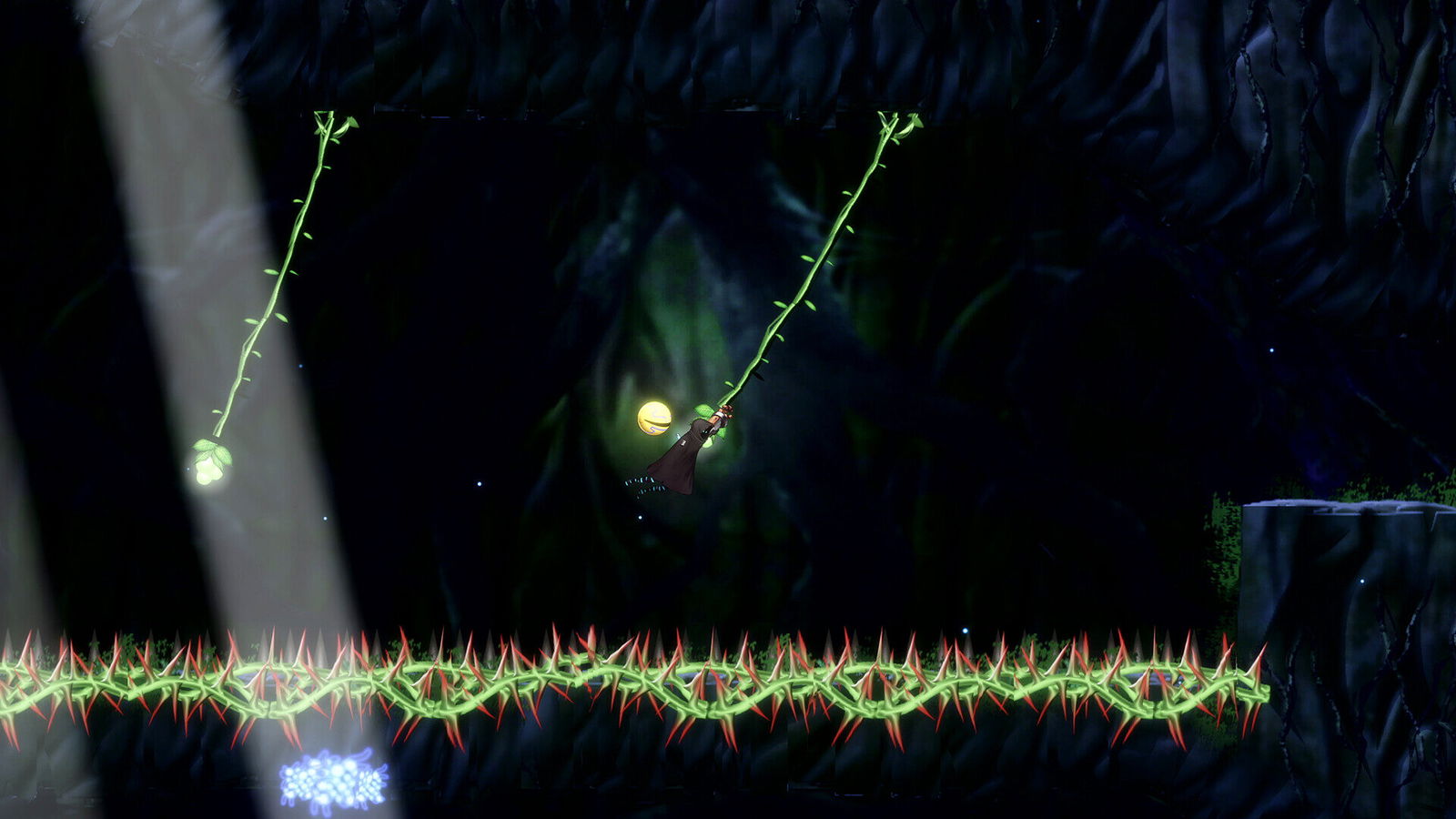
This begins most notably with the control—something about it just feels off. Movement feels slippery and imprecise, particularly when it comes to jumping. The all-important dodgeroll has a strange curve, and it’s hard to place where the invincibility frames are. This is similar for the segments where you become PAC-MAN and can travel along walls and ceilings. PAC-MAN will move automatically, but players are able to jump, and these jumps have bizarre trajectories based on how you hold the stick, and it never feels intuitive.
Combat is mindless and never really feels like a challenge. Standard enemies are basic and don’t pose much threat outside of when the game decides to swarm you with enemies, and bosses are only “challenging” on the first attempt while you learn their telegraphs, and then they’re complete jokes. Boss AI can range wildly—one encounter with a giant bird had it throwing whirlwinds at me, but the arena gave me climbable walls in order to dodge them. However, when I got on the walls, the boss would just spam whirlwinds infinitely, giving me no real window to engage.
“I supported Shadow Labyrinth in principle; however, the more I played it, the more that support waned.”
And while I said bosses are only really a challenge on the first few go-arounds as you learn their attacks, this is actually kind of a half-truth. Several boss fights had moments where, on the first two or three attempts, they would use the same attacks, only to whip out completely new ones on the next go-around and deal completely unfair damage. This didn’t seem like a moment of surprise or catching a player off guard; it just felt like bad programming wherein earlier fights just seemed to forget these attacks existed.
But the worst sin Shadow Labyrinth makes is its awful implementation of a gosh darn Stamina meter, or as it’s called here, ESP meter. Almost every major action the player requires, from dodging, to consuming enemies—which we’ll get into in a sec—to using special attacks, consumes ESP and if the meter empties, players are unable to use any of their moves until it slowly refills to the max. This can put players in incredibly vulnerable states against bosses that require a lot of successive dodges and lead to some cheap deaths.
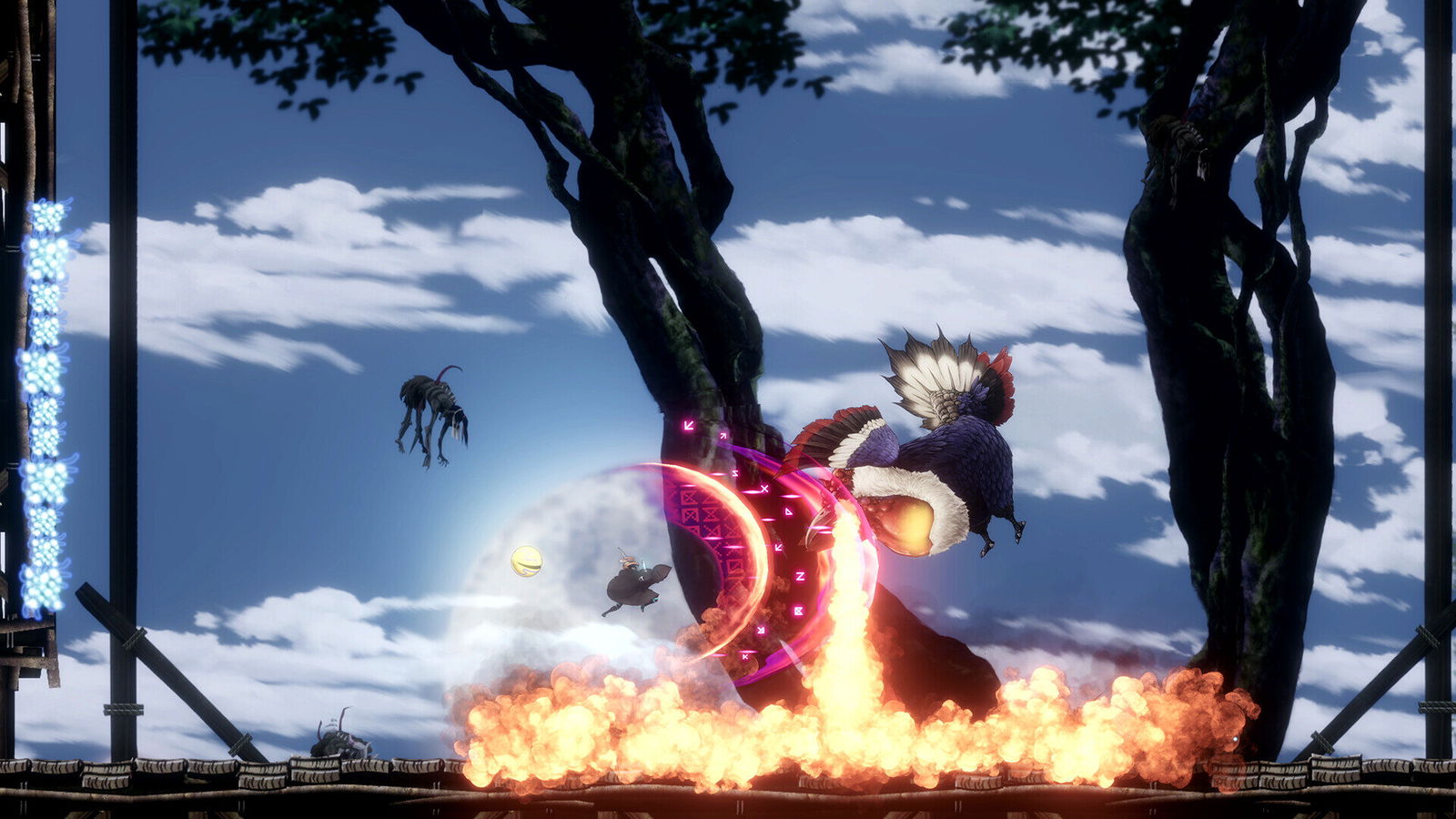
I really wish game designers would stop doing this. Like I’ve said before, you can’t just pull ideas from other games without understanding why they work. You’re not making Dark Souls, stop pulling ideas from there. And sure, Metroid Dread gave players a dodge that was tied to an energy bar, but it also gave players a VAST suite of movement options and ranged attacks—not to mention the bar refilled almost instantly.
All this is also compounded by Shadow Labyrinth’s terrible health and save point system. Throughout the world, players will find two kinds of save points—ones called Miku Sol’s, where players can upgrade their abilities and just basic checkpoint-style save points. These save points are sparsely placed, and never in areas that seem intuitive.
Furthermore, as players explore and engage in combat, they are given health replenishables. However, once they use them, they can only be restored at Miku Sol checkpoints. If players hit a regular save with empty flasks, they’re essentially stuck until they can find a proper save point. This led to several moments where I was either just running past enemies, avoiding any confrontation, or flat out skipping new areas I had found because the level of danger mixed with the awful health system made any potential rewards not seem worth the frustration.
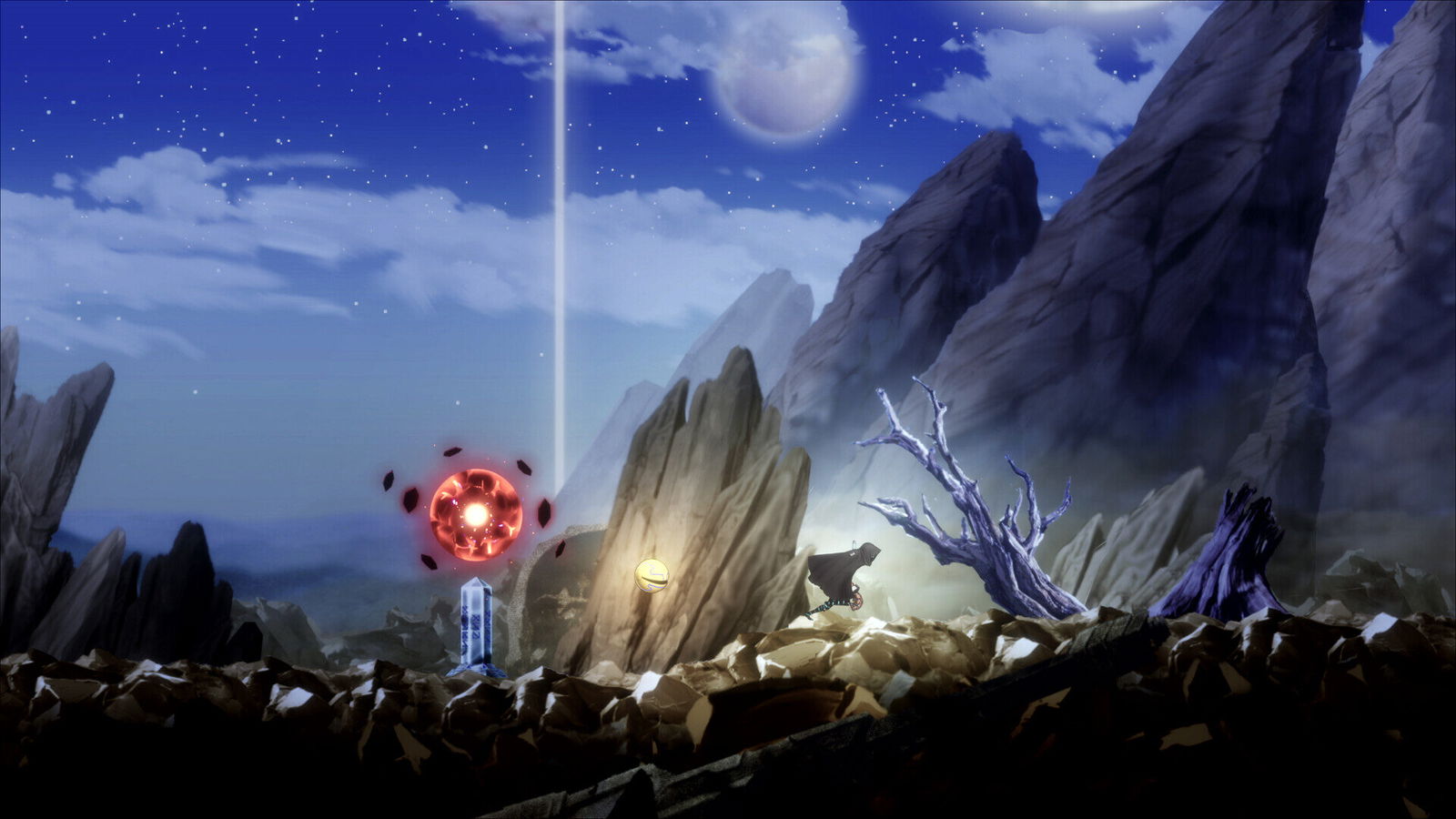
And you may be thinking, “Well, that doesn’t sound too bad, you don’t need to kill everything you see in other Metroid-likes.” But here’s the thing—fighting enemies ties directly to the game’s “GAIA system.” As you may have seen in trailers, players are able to combine with PUCK in order to turn into a massive robot capable of decimating foes. However, this system isn’t as enjoyable as it should be since it doesn’t last very long to begin with and taking damage hastens how quickly you get knocked out of it. Also you don’t get I-Frames during the return animation, so you can take unfair damage that way too.
And once it’s depleted, you have to consume enemies to refill the energy needed to activate it, and as far as I can tell, enemy size affects energy restoration. So you constantly need to stop and fight in order to consume them, which requires a tedious animation every time, and can leave you vulnerable to hits if you try to activate it around other enemies. Not only that, but consuming enemies gives you materials that you need to purchase certain upgrades from stores, so there’s a lot tied to this system despite how uninutive it feels.
“Shadow Labyrinth, on the other hand, feels incredibly stingy and so much more laborious.”
Another problem Shadow Labyrinth suffers from, primarily in its exploration, is just how much of a slog it feels like. Something I genuinely couldn’t believe during my experience with the game was when I booted it up and saw that, at that point, I had been playing for 10 hours. I thought, “Surely this must be the time I last saved.” But no, it had been 10 hours, and the reason this bothered me—not just because of how frustrating everything about the game was—was just how much longer it felt than that.
By contrast, I very recently sat down and completed Super Metroid, remembering how that game also used to feel like it took quite a long time to beat—which was why it shocked me when my completion time was three hours. Now it could be easy to chalk this up to my familiarity with one of my all-time favourite games, but I realized in that moment that Super Metroid, or even something like Hollow Knight, feels so much better-paced because you get both combat and traversal upgrades far more frequently.
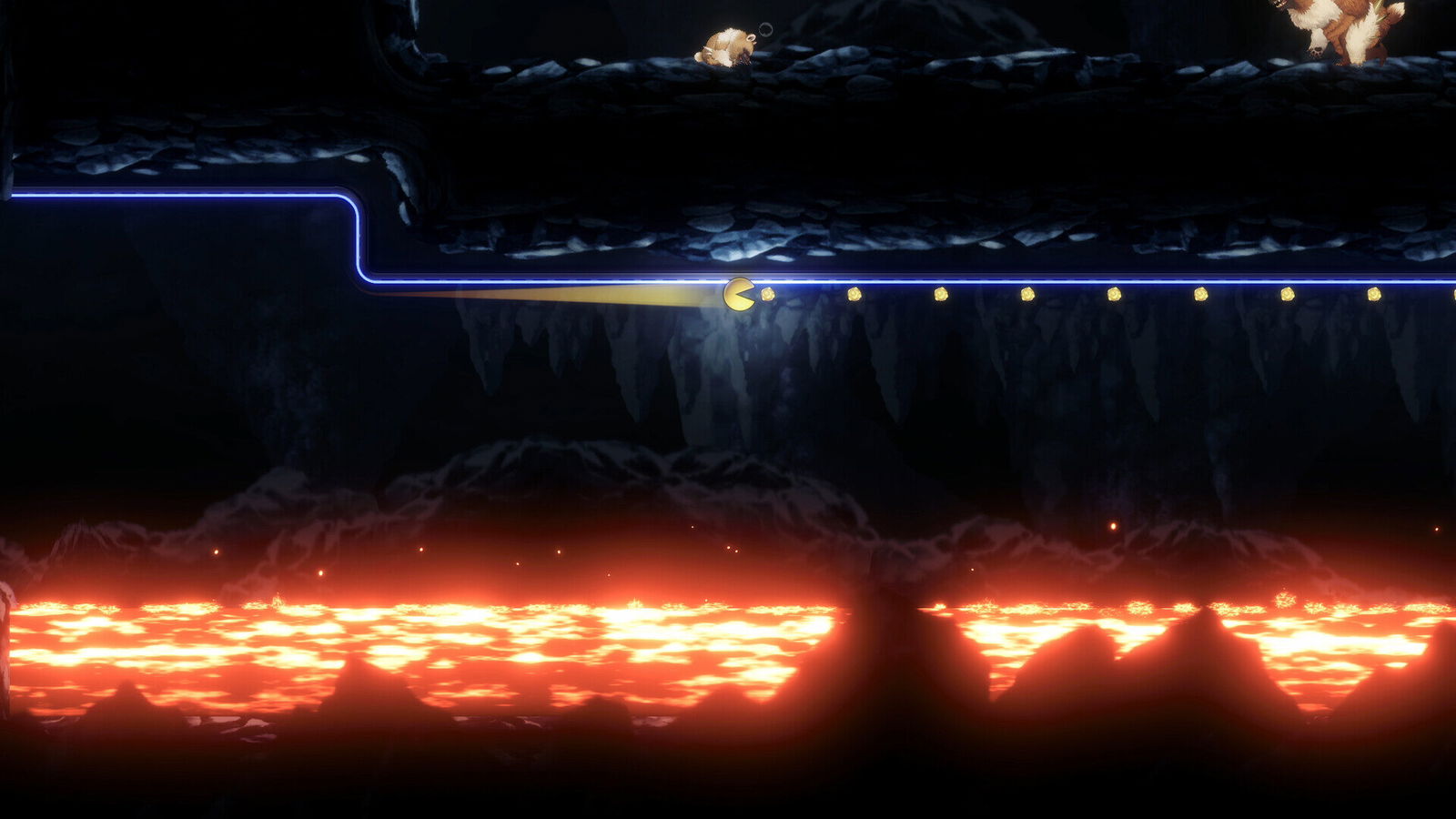
Shadow Labyrinth, on the other hand, feels incredibly stingy and so much more laborious. Within that 10-hour frame, I might have gotten one traversal upgrade—an aerial dodge—and a handful of combat upgrades like a block and parry that really felt like they should’ve just been available from the start. As the game went on, key upgrades like a grapple hook or double jump took what felt like forever to access.
Looking back on games like Metroid or Hollow Knight—which Shadow Labyrinth feels the most inspired by—they had such excellent area design because they not only did a lot of storytelling, but were also designed in such a way to present obstacles, but give you the method of overcoming those obstacles a little further into the level. By contrast, Shadow Labyrinth’s levels just feel kind of dull and almost discourage exploration.
Like I said, Shadow Labyrinth ends up feeling like a game that doesn’t really know what it wants to be. Its world doesn’t feel interesting enough to be worth exploring, not when the reward for slogging through enemies with no health items is just a text log to tell the story, the world and actual cinematic narrative could be doing more; and its combat isn’t engaging enough to make fighting feel fun and exciting.
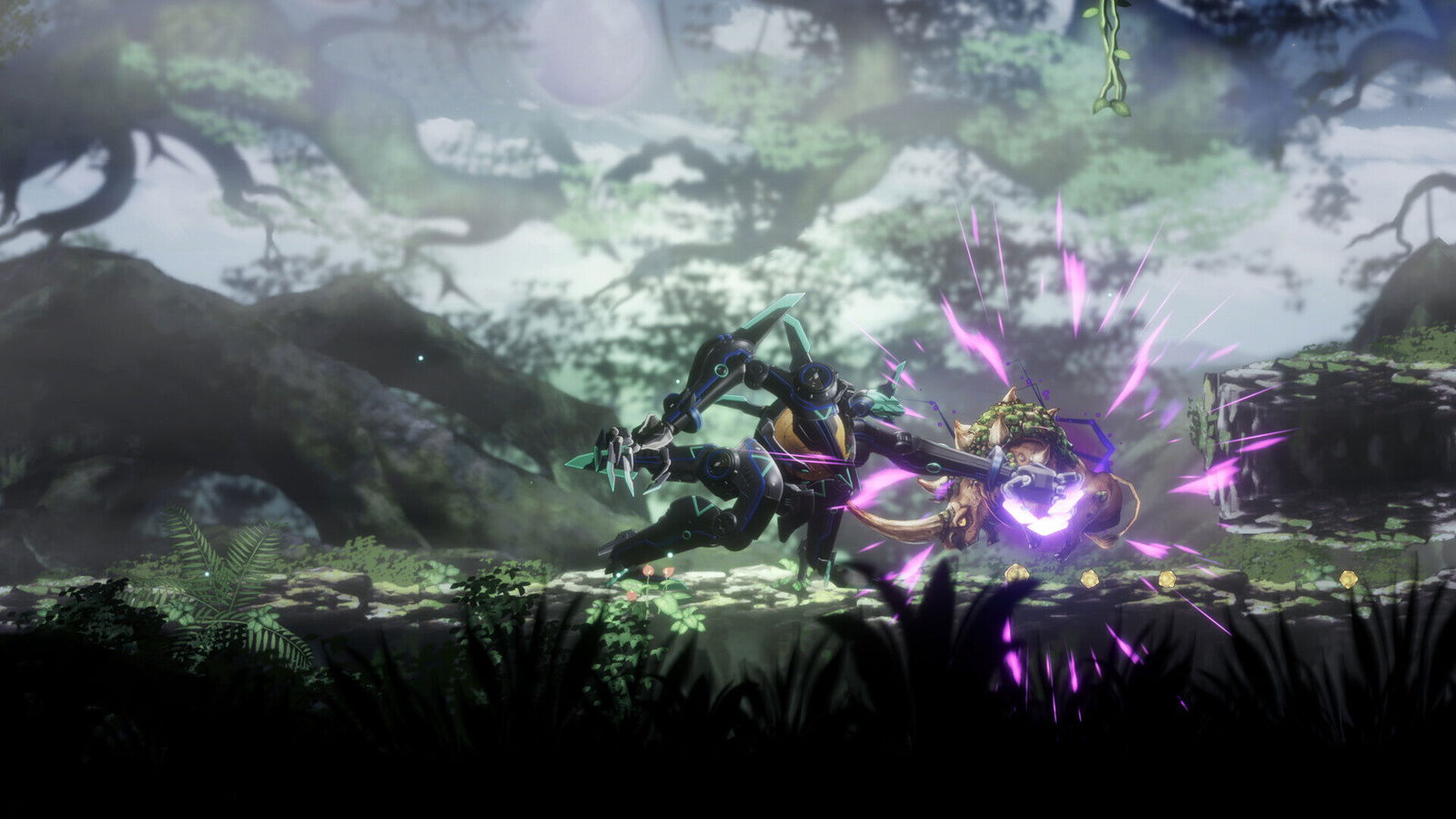
At the very least, I will say it does find fun ways to implement PAC-MAN into the proceedings. Using PUCK to move along walls and ceilings like Samus’ Spider Ball power is pretty neat, and when the game throws you into intense versions of old-school PAC-MAN, it is really fun and exciting. It had me wishing the whole game found more ways to just work in elements from Namco games in a more arcadey, action-oriented kind of way.
“…credit where it is due, the music in Shadow Labyrinth is seriously impressive.”
Even the game’s visuals start to lose their lustre after a little while. The whole game looks kind of cheap, with certain environmental effects being very obviously looping GIFS, transforming from PUCK back to the Swordsman has no transition animation and characters and enemies moving in a kind of static way, giving them a kind of paper-doll aesthetic that just feels off. It ends up feeling less like a polished game from a storied studio and more like a mid-tier Flash game you’d find on Newgrounds in the early 2000s.
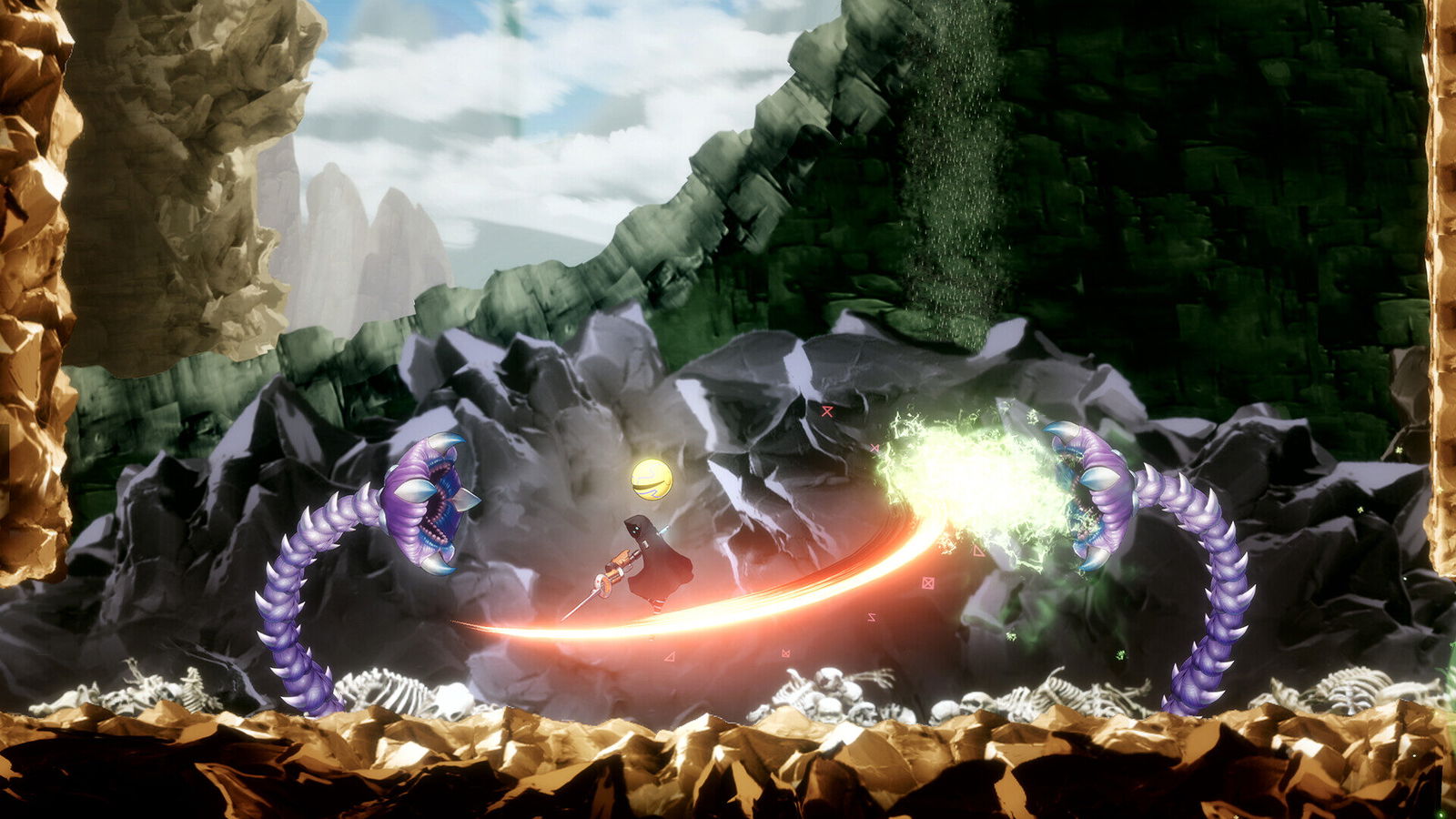
However, credit where it is due, the music in Shadow Labyrinth is seriously impressive. Each area theme manages to capture the otherworldly mood and atmosphere and does a good job of putting the player on edge and making them feel isolated. When this is contrasted by intense techno-metal during boss fights, they do feel genuinely exciting and epic—it’s just a shame the gameplay doesn’t do the same.
Supposedly, the theme of PAC-MAN’s 45th anniversary was “impact,” which was why Bandai Namco chose to make Shadow Labyrinth the way they did. However, I feel the opposite effect has been achieved here. The game ends up feeling like a shadow of better Metroid-likes, and had it leaned more into its arcade inspirations, it would have made for something much more fun and meaningful.
If you were seriously chomping at the bit for a dark, gritty PAC-MAN, you may find something to like here, but for someone like me, who has played far better versions of what Shadow Labyrinth is trying to be, there was little fun to be had.
